Kia Sorento Vs Toyota Highlander Hybrid Comparison: Suburban SUV Showdown

A new challenger has entered the ring.
Last time around, we pit the Kia Sorento against the much larger and quite popular Honda Pilot. In case you missed it, you can read how that match-up turned out here. While the result of its last match-up wasn’t too surprising for as spacious and practical the Pilot is, it is also very old. Plus, it guzzles fuel like it won’t get anymore. So it was time to get in a new challenger.
The one in question debuted as a 2020 model, is underpinned by a new platform and is a darling of the mid-size three-row crossover market. If you haven’t guessed it yet, it’s the 2021 Toyota Highlander. Yes, we agree the Sorento is a tad small to compare to the likes of the Highlander, but if the results of the last test are anything to go by, it can hold its own against bigger rivals. So, this match-up is far fairer than would appear.
Get a Quote on a New Kia Sorento or Toyota HighlanderIn one corner we have the Kia Sorento, the new kid on the block, and a textbook crossover. A tad compact but laden with tech and offering high levels of comfort. In the other corner stands the Toyota Highlander hybrid, a venerable three-row crossover that no one doubts before putting their money down. Ready? Fight!!
Interior and cabin space
Sorento: The front of the cabin is spacious and well-appointed. Most touch surfaces are finished in leather and the patterned brushed aluminum panel on the passenger side and brushed metal finish on the air vents adds flair to the overall aesthetic. It also gives the cabin a two-tone visual and complements the black upholstery quite well. We especially appreciated the knee vents which were a boon on a hot summers day. Deviating a bit, the aircon is pretty powerful and you do need to turn lower vents off but their usefulness cannot be overstated.
An integrated instrument cluster and infotainment screen also add to the overall aesthetic of the cabin. Our tester came with quilter leather seats which along with being very comfortable add to the plushness of the cabin as well. Plus, with 40.3 inches (1,024 mm) of headroom up front, headspace, even for the tallest of passengers will not be a complaint.
This being the SX trim, our tester came with captain’s chairs that carry over the quilted leather design from the front. While comfortable the seatbacks though could have done with a bit more width. They also feel a tad flat compared to the enveloping front perches. But thanks to 41.7 inches (1,060 mm) of legroom, the space at the rear is even more cavernous than the front ( 41.4 inches/1,052 mm). Headroom suffers by an inch but you will not notice the deficit.
Access to third-row is literally just a push of a button away but space is constricted. With a shoulder width of 53 inches (1,346 mm), there is barely enough space to squeeze in two adults. Plus, the Sorento doesn’t give you a choice for a third passenger in the rear by only providing two seats. Its smaller size also affects its cargo capacity which stands at just 12.6 cu-ft (357 L) behind the third row. It expands to 45 cu-ft (1,274 L) with the middle row folded and to 75.5 cu-ft (2,139 L) with the rear two rows down.
Highlander: Compared to the Sorento, the Highlander’s cabin feels richer. The wood panels on the center console and the door are fake, but they look real. Plus, a brighter and elegant dual-tone cabin finished in brown and cream hues adds to the overall plushness of the cabin. All surfaces are soft to the touch and even the door panels feature stitched leather.
SEE ALSO: Kia Sorento vs Honda Pilot Comparison: Three-Row ThrowdownToyota being Toyota, storage spaces galore. There is a little cubbyhole under the infotainment system to store your phone. There is also an operable hatch through which you can connect your phone to the USB port via the tethering wire. The passenger side gets its own cubby holes for a phone and other knich knacks. Door panels can hold a large insulated thermos without issue. Then there is the cavernous armrest storage that can probably swallow animals whole.
Space in the cabin, however, is on the lower side despite its size. Front occupants get 38.4 inches (975 mm) of headroom which drops to 37.1 inches (942 mm) in the second row to 36.1 inches (917 mm) at the rearmost bench. The Sorento by contrast offers more passenger space despite being smaller. In terms of legroom too, the Highlander falls slightly behind.
The front row enjoys 40.4 inches (1,026 mm) of legroom which increases to 41 inches (1,041 mm) in the middle row while the third row makes do with just 27.7 inches (703 mm) of legroom, almost two inches less than the Sorento. But you can slide the captain chairs fore and aft to free up more space for the third-row occupants. Also, the third-row can technically seat three but realistically, you can seat two. Another problem is that you sit with your knees up so adults can only occupy the rearmost bench for short stints.
Comfort is great all around, there is no quilted leather here but the front seats are very supportive and enveloping. The second-row captain’s chairs also feel larger and better contoured compared to the ones on the Sorento. Also, our tester came with the panoramic sunroof which eliminates the beam that blocks your vision on the XSE. The Highlander also offers significantly more cargo capacity than the Sorento as well. You can store 16 cu-ft (452 L) of luggage behind the third row, 48.4 cu-ft (1,370 L) behind the second row and folding both rear rows down expands the space to 84.3 cu-ft (2,348 L).
Bottom Line: While the Sorento does offer a slightly more spacious cabin, the Highlander offers more cargo space and better-contoured seats especially in the second row. Plus. it utilizes the space inside better than any other three-row in the segment. Round 1 to Highlander
Tech and features
Sorento: Kia offers the Sorento with an 8.0-inch screen as standard. Interestingly, it also comes with wireless Android Auto and Apple CarPlay which you lose when you upgrade to a larger piece of real estate. The tethered phone projection is the UVO system’s only downside. The 10.25-inch screen is otherwise intuitive, easy to use, and offers a crisp and high-definition display. The native navigation system leaves a lot to be desired, however.
Unlike the Highlander though, the Sorento offers a 12.3-inch fully digital instrument cluster which again, like the infotainment system is intuitive, easy to operate, and offers a crisp display. The Bose surround audio system will be appreciated by audiophiles, ones in the third row, however, might feel a bit shortchanged.
Sorento offers only a dual-zone climate control and while the second row makes do with only vents, the third row doesn’t get that either, and the sound system doesn’t sound as good at the rear either.
Highlander: Toyota also offers an 8.0-inch screen as standard but there is no wireless phone projection regardless of the trim. The Platinum hybrid that we have here gets the much larger 12.3-inch infotainment system. Unfortunately, it’s a better-looking version of the Entune system found on almost everything that wears a Toyota badge. But all is not bad.
The display is crisp and offers good definition. Also, the right half of the screen can display climate control status which looks quite cool. Tethering to Apple CarPlay and Android Auto is quick and seamless. Surprisingly, the native navigation is fairly accurate and can be relied on. Toyota also offers tri-zone climate control with the Highlander with a separate zone for the second row and vents for the third row of seats.
Unlike the Sorento, the Highlander’s instrument cluster is an analog-digital hybrid. A 7.0-inch MID screen displays all the vehicle information while the hybrid system and speedo sit on either side.
Bottom line: The Kia Sorento offers a more intuitive infotainment system and a digital instrument cluster. HUDs on both are equally well laid out and informative. The Highlander however offers three climate zones and vents for the third row which are absent on the Sorento. Its native navigation is also more accurate than the one on the Kia. Hence this round goes to the Highlander.
Powertrain, driving feel, and Fuel Economy
Sorento: A 2.5-liter turbo powers the Kia and pairs with an eight-speed DCT. With 281 hp of max power and most of the 311 lb-ft of torque available from under 2000 rpm, the Sorento is a sprightly crossover. The eight-speed DCT doesn’t have the low-speed jerkiness usually associated with such gearboxes. Left to its own devices it tends to shuffle through the gears seamlessly finding the right one almost every time for every speed.
Even during kickdown the transmission responds quickly enough and is especially effective for quick overtakes. The steering is well-weighted, and the suspension complements the powertrain quite well. It soaks up the bumps and keeps the Sorento stable at highway speeds. Being considerably lighter than the Highlander you can have some fun in the corners and the responsive DCT certainly helps.
EPA rates the Sorento at 21 mpg in the city, 28 for the highway for an overall figure of 24 mpg.
Highlander: while technically classified as a crossover, the Highlander is as close to an SUV as you can imagine. The seating position is high-set compared to an almost car-like driving position of the Sorento. The steering too comes out at an angle more akin to SUVs. The commanding position gives you a better view of your surroundings but also leaves you a bit disconnected. But then again, the Highlander is nowhere as spirited as the Sorento.
Its 2.5-liter Atkinson cycle four-pot hybrid makes 243 hp of combined power despite being heavier by almost 300lb. It pairs with an ECVT that primarily drives the front wheels. You need to be deliberate with the throttle if you want to get going quickly. But the Toyota isn’t meant to be driven like the Sorento. Keep your throttle gradual and the Highlander responds with an almost silent ride. The powertrain shifts seamlessly between electric and gas power. It can even go on pure EV mode for short distances and is especially useful in bumper-to-bumper traffic. A light steering makes it easy to maneuver despite it being almost 195 inches (4,953 mm) long and 76 inches (1,930 mm) wide.
When driven sedately, it can return as much as 36 mpg (6.8 L /100km) in the city. The suspension is soft sprung however and doesn’t respond as well to fast turn-ins. Bump absorption however is impeccable. On the highway too, the Toyota stays planted so long as there are no sudden changes in direction. The steering weighs up nicely but isn’t as communicative as the Sorento’s. It also feels heavy when switching two lanes and under braking from high speed. The brakes comply buy you can feel the over 4,500lb mass bearing down on the front wheels.
EPA rates the Highlander for 35 mpg in the city, 34 mpg on the highway, and 34 mpg overall. But you can extract 36 mpg in the city with ease.
Bottom Line: The Sorento is significantly better as a driver’s car. But both are equally matched when it comes to city manners and while the Sorento behaves better on the highway, the difference is minor. Plus, the Highlander is significantly more efficient thanks to its hybrid powertrain and hence the winner of this round.
Safety
Sorento: Kia offers driver assistance systems like automated emergency braking, lane following and lane-keeping assist, and auto high beams as standard. Cyclist detection is available from second to base trim onwards but driver assists like Highway Driving Assist, navigation-based adaptive cruise control, 360-degree camera, and blind-spot collision avoidance are all reserved for the top trim.
According to the NHTSA, the Kia scored four out of five stars in total. It scored four stars in frontal crash and rollover risk but side-impact protection was rated at a full five stars. The Sorento is also the Top Safety Pick for IIHS or the Insurance Institute for Highway Safety.
Highlander: Toyota offers its safety sense 2.5+ as standard across the Highlander and Highlander hybrid range. It includes features like pre-collision system with pedestrian and cyclist detection, lane departure and lane-keeping assist, emergency steering, dynamic cruise control, and road sign assist as standard. Plus, all hybrid trims get blind-spot detection as standard.
According to the NHTSA, Highlander scores full five stars in its crash tests. It scored five out of five stars in all side-impact tests but four stars in front impact and rollover risk. In addition, just like the Sorento, the Highlander too is IIHS’ top safety pick.
Bottom Line: A few of the driver assistance features that are optional on the Sorento are standard on the Highlander and it also boasts of a higher crash test score so is the winner of this round as well.
Styling
Sorento: As you would have already read numerous times before, we quite like Sorento’s styling. The prominent tiger-nose grille flanked by the sleek eyes complete with the cheetah-inspired tear lines makes for a muscular and quite appealing front-end. The boxy shape complements the fascia and the vertically stacked tail lights combined with the overall angular approach to design strike a delicate balance between traditional SUV design and modern lines.
Highlander: Where the Sorento is edgy, the Highlander is a bit more rounded. It too features design lines running from everywhere to everywhere. The profile is especially busy with the flare at the rear quarter which is supposed to remind you of the Supra but only the Sienna comes to mind.
The front fascia though is angular and quite striking thanks to a large grille and sleek headlamps but it isn’t what you’d call a good-looking face.
Bottom Line: Design is subjective but in this case, it is admittedly hard to like the Highlander for its design. It’s is something you like in spite of the way it looks. So in our books at least, the Sorento wins this category.
Pricing
Sorento: Pricing for the Sorento starts from $30,565 including destination for the base LX trim with FWD. Upgrading to AWD adds $1,800 to the overall price. North of the border the Kia comes with AWD as standard with prices starting from $35,845 CAD.
The one we have here is the top Canadian-spec SX trim ($49,345 CAD) which comes with all bells and whistles including the instantly recognizable 20-inch wheels, the 10.25-inch UVA touchscreen, and the 12.3-inch all-digital instrument cluster, heated and ventilated front seats, heated rear seats and all driver assistance systems Kia currently offers. The US equivalent is the SX-Prestige priced from $41,765.
There are some differences between the two markets that we should point out. The X-line is available as its own trim in Canada which starts from $41,345 including destination and is the most affordable turbocharged Sorento trim in the lineup. Conversely, in the US the X-Line is an option pack that is reserved for the top SX-Prestige trim. It adds AWD and other aesthetic bits to the SX Prestige for $2,000 extra. So an exact equivalent to our tester doesn’t exist in the US but the SX Prestige with X-Line ($43,765) comes mighty close.
Highlander: The base LE trim with FWD starts from $39,950 including destination. AWD adds 1,600 to the list price. In Canada, the Highlander hybrid too is available with AWD as standard and prices start from $47,810 CAD. Tri-zone climate control is available XLE onwards which starts from $42,750 ($50,310 CAD)
Also, just like the Sorento, the trims in the US and Canada are a little different. Where the Platinum is its own trim in the US, it is a package in Canada. The features however are nearly identical. In the US, the top trim is priced at $51,855 for the AWD which is the closest to the one we have here which is the Limited with Platinum add-on package ($2,300 CAD) and is priced at $58,310. Both however come with all bells and whistles including the massive 12.3-inch touchscreen, leather-appointed cabin, power panoramic roof, and a host of driver assistance features.
Bottom Line: While Toyota offers a lot more driver assists as standard, the Sorento offers a lot more convenience features at a lower price whereas Toyota requires you to pay a hefty premium for things like HUD, a panoramic sunroof, and a larger infotainment system. A win for the Kia then.
Verdict: Kia Sorento vs Toyota Highlander Hybrid
The Kia Sorento is a great product. It offers everything someone might look for in a family three-row crossover at a relatively affordable price. It is also good to drive, well equipped, and looks good as well. But if you are looking for an engaging drive, you are looking at the wrong segment.
Toyota does require you to pay for its premium features but its standard kit is equally impressive. The Sorento SX we have here is priced at $43,765. For just $1,000 more you can have the AWD Toyota Highlander XLE hybrid ($50,310 CAD). Yes, it will not have the larger 12.3-inch screen and have fake leather instead of the real thing but it will have the whole suite of driver assistance systems along with a tri-zone climate control system. Then there is the hybrid powertrain which is at least fifty percent more efficient than the Kia’s turbo powerplant and you get tons of more cargo and storage space to boot. Lastly, if you’re willing to settle for the FWD XLE you’ll end up paying less than the Sorento SX.
Hence, the winner of this match-up is the Toyota Highlander hybrid.
Become an AutoGuide insider. Get the latest from the automotive world first by subscribing to our newsletter here.

More by Kshitij Sharma




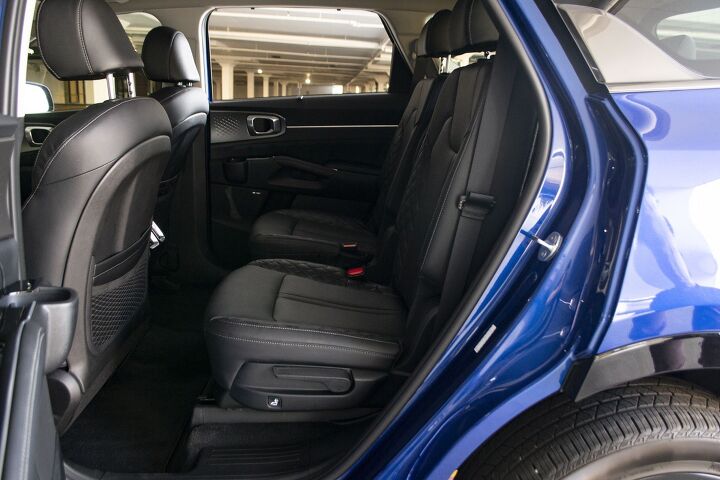


































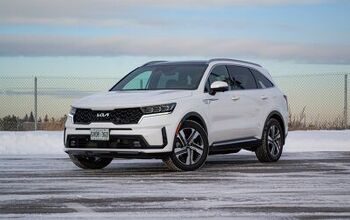
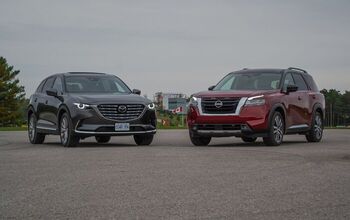
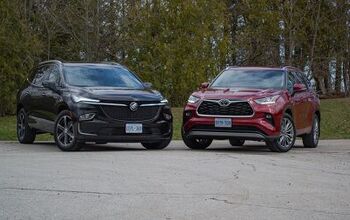


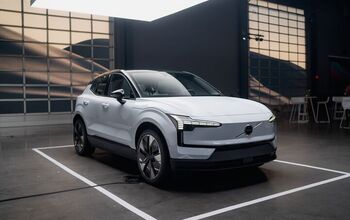





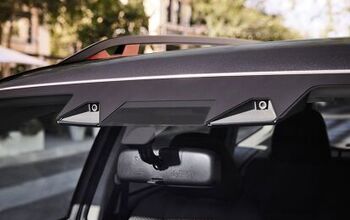

Comments
Join the conversation